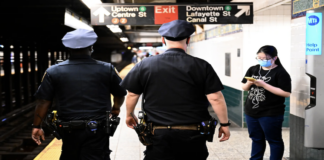Many states, including the federal government, fund their programs by imposing usage taxes on products that the government wants people to use less. These include alcohol, gasoline, and cigarettes. Tax revenue drops dramatically when people lower their consumption or a product gets banned. This forces legislators to cut programs or increase taxes. They almost never cut programs.
This scenario is playing out right now in California in relation to the state’s ban on certain tobacco products with flavors that took effect in December of 2022. The ban was passed in 2020 by the California legislature, but it was immediately challenged. It didn’t take effect until 2022 when voters approved Proposition 31 upholding the ban.
Everyone involved at the time (proponents and opponents, legislators, independent think tanks) estimated the loss of tax revenue to be in the hundreds of millions of dollars. The advocates argued that Medi-Cal would save money because the people who quit smoking would have fewer tobacco-related medical costs. This line of reasoning has a few flaws. It assumes people will stop smoking tobacco because they cannot get these flavored products. Numerous data suggest that this is not the case. People will either switch to non-banned products or buy the banned items on the black market. It is assumed that the majority of people who are using it but will stop are already on Medi-Cal and are being treated for tobacco-related health issues. It is also assumed that Medi-Cal will save money almost immediately. There are many assumptions and no data to support them.

The people who propose the ban should at least understand that bridge funding is needed for programs that are affected by tax revenue losses and know where to get that funding. It’s California, so I have long believed that legislators and lobbyists draw out the outline of proposed legislation in a steakhouse close to the Capitol. This framework then becomes law. They then let the regulators sort out the details, and fix any “unintended consequences”.
The fact that tobacco tax revenues are used to fund mental health programs and early childhood education is making matters worse for Californians who are already vulnerable. Proposition 10, also known as the California Children and Families Act, imposes an additional tax on tobacco products and consumers. This money is used to fund the state’s First Five programs. These county-based programs “focus on child health, parental education, child care and other services and programs for children from prenatal to age five,” including postpartum support services.

Tobacco tax dollars account for 73% of First 5’s budget in the state, but this number varies greatly by county. First 5 Kern County, for example, relies almost exclusively on tobacco taxes. In its latest annual report, First 5 Monterey County reported that nearly 40% of its funding comes from grants and charitable donations.
The flavored tobacco ban is having a serious impact on funding. The Tax Foundation reported in the first month following California’s flavored tobacco ban that tax-paid cigarette sales had fallen 17.3 percent from the previous year. This translates to more than 300 million dollars of lost tax revenue annually.
Angela McGregor told Spectrum News how these services were vital to her family.

As more Californians have quit smoking, a large portion of funding for the First 5 programs comes from a tobacco tax that is declining.
According to Gina Daleiden of Yolo County First 5, this funding decline has been increasing in recent months.
Daleiden stated that Proposition 10 tobacco taxes have been decreasing at a rate between 3% and 5% each year. The decline could be more than 10% or 20% with the passing of the flavored tobacco ban.
Daleiden says all First 5 departments operated by counties are looking for new sources of funding.

She said that in Yolo County, they were able to offset some funds by using money from the local cannabis tax. However, she said this was an unstable source.
The first 5 are looking for ways to access funding from state and local governments. Also, consider asking the state to provide some funds directly from its budget to cover the loss.
This issue, regardless of one’s opinion on the utility or propriety of government-funded programs for early childhood education, highlights an aspect of the interaction between sin taxes and product bans that is rarely discussed. It’s in the best interest of these programs to encourage people to continue using tobacco by allowing legal sales. These products will not decrease demand if they are banned. Instead, the demand will be driven underground where there is no tax. It would be better to avoid tying “sin taxes” to funding for healthcare or mental health and to insist that legislators come up with immediate alternative funding before enacting these bans.










